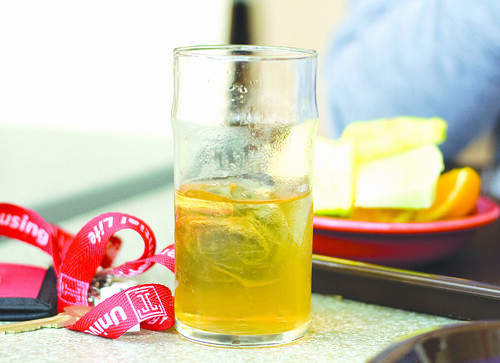There was a time when patrons of the Louis J. Esposito Dining Hall took Styrofoam cups in the cafeteria for granted.
Those days are over. Now J&H has new and improved plans for its customers, and removing Styrofoam cups was one of its first orders of business.
With new renovations and plans of going green, the cafeteria is working toward becoming environmentally friendly.
Since 2002, J&H patrons used Styrofoam cups. Although some students disapprove of this sacrifice, it is more proof of Temple’s extended efforts to go green.
“With the removal of Styrofoam cups, we have saved roughly 3 million cups from going into landfills that ultimately harm the environment,” said Bryan Sparks, Sodexo’s district manager.

Styrofoam, also known as Polystyrene, negatively affects the health of the environment and humans. The Environmental Protection Agency estimates that more than 73 billion Styrofoam and plastic cups are thrown away each year in the United States. As a result, landfills become overfilled and pollutants are released into the air.
According to the Earth Resource Foundation, the manufacturing process of Styrofoam releases hydrocarbons that may ultimately lead to reduced lung function, chest pains, coughing and wheezing.
With the ongoing efforts of the Office of Sustainability and Students for Environmental Action to make campus life greener, J&H-goers seem pleased with the change.
“With the absence of everyone’s favorite little cup comes both positive and negative effects,” said senior broadcasting major Johnny Archer. “I believe the positives of its disappearance exponentially outweigh the negatives. Thousands of students would eventually throw those cups into the trash, where they will remain in some landfill until the end of time.”
Negative reactions have been circulating down the wood-paneled path in the cafeteria that using glasses and mugs is not so clean and not at all convenient for students wanting to bring leftovers back to their rooms.
“People have to be more creative now with taking food,” said Sara Goldrath, a sophomore theater major and frequenter of J&H. “It used to be a matter of filling up the cup and taking things to go. Now what do we do?”
Sodexo has heard these concerns before and is prepared to respond to potential complaints.
“The main concern is with ice cream, but with the introduction of cones there should be no reason students would have a problem with taking it to go,” Sparks said.
Like Goldrath, senior communications major Steve Racht often dines at J&H.
“Using Styrofoam cups was awesome,” Racht said. “They were so convenient. I guess we’re helping the environment now, however the cleanliness of the glasses is hit or miss and I don’t know how much I actually trust the sanitation process.”
“There is a team of people who are working extra hard in the kitchen,” Sparks said. “They follow a process of wash, rinse, sanitize.”
Monica Sellecchia can be reached at monica@temple.edu.



I was wondering if you are intrested in seeing a new product to lower cooking fires on universities. We have the same last name by the way
Hi Vincent,
Yes, I would love to see the new product- and yes how crazy is that?…relation?